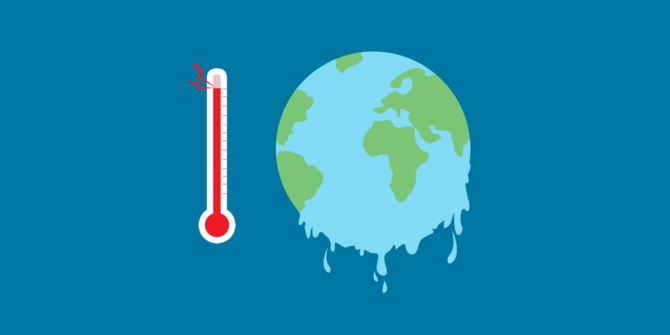June 20, 2019, 9 a.m.
A
wild jaguar approaches a camera trap at Nouragues Natural Reserve in French
Guiana. (Photo: © Emmanuel Rondeau/WWF France)
Jaguars are
the third-largest cat species on Earth, smaller only than lions and tigers, and
the largest one left in the Americas. They're incredibly sneaky despite their
size, though, and excel at fading into the background. They may have been an
uncommon sight even in their heyday, when they roamed from Argentina to as far
north as the Grand Canyon and Colorado.
Still, they're especially ghostlike today, and not just because
of their natural stealth. Jaguars now exist only in fragments of their former
range, having been wiped out in many places by generations of habitat loss and
hunting. And while camera traps have given us glimpses of these elusive cats in
recent years — including a few high-quality shots, like these from
photographers Steve Winter, Nick Hawkins and Sebastian Kennerknecht — it's relatively rare to
record wild jaguars in the vivid detail they deserve.
In hopes of capturing new high-resolution images of jaguars in
their element, WWF France commissioned photographer and videographer Emmanuel
Rondeau for an expedition to French Guiana. This quest, documented in the WWF's
new web series "Mission Jaguar: Guiana,"
took Rondeau to Nouragues Natural Reserve, which protects 105,800 hectares (408
square miles) of tropical forest in northeastern South America. Below are some
of the images he caught there, courtesy of WWF France.
Welcome
to the jungle
Nouragues
Natural Reserve borders the Guiana Shield, a geological formation and
biodiversity hotspot on the northeastern coast of South America. (Photo: ©
Emmanuel Rondeau/WWF France)
Nouragues Natural Reserve lies at the edge of the Guiana Shield,
a roughly 2 billion-year-old geological formation where up to 80% of the native
biodiversity may be unknown to science. It's also near the Amazon, the world's
largest protected tropical rainforest and still one of its most mysterious.
Scientists continue to find previously unknown wildlife there, such as the 381
species discovered during surveys in 2014 and 2015, including 216 plants, 93
fish, 32 amphibians, 20 mammals, 19 reptiles and one bird.
The
reserve lies at the heads of two watersheds, formed by the Approuague and Comté
rivers, and hosts a wide variety of riparian habitats. (Photo: © Emmanuel
Rondeau/WWF France)
Founded
in 1995, Nouragues stretches across a swath of French Guiana between the
Approuague River and the Haute-Comté region. About 99% of the park's vegetation
is dense tropical rainforest, but it also supports other ecosystems like
riparian forests, liana forests and "cambrouses," or thick formations
of bamboo-like grasses.
Spotted
cat spotted
Rondeau's
high-resolution camera trap captured several striking images as the jaguar
cautiously crept through the forest. (Photo: © Emmanuel Rondeau/WWF France)
Jaguars
are the top predator in the Amazon Basin, where they play an important
ecological role by controlling populations of many other species across their
habitat. They prey on large land mammals like deer, peccaries and tapirs, but
also defy the feline stereotype of avoiding water. Jaguars are good swimmers,
and prowl rivers for fish, turtles and caimans.
Jaguars
are the top predator in the Amazon and the largest big cat species in the
Americas. They're the third-largest feline on Earth, trailing only lions and
tigers. (Photo: © Emmanuel Rondeau/WWF France)
The
jaguar's range has shrunk by half in the last 100 years, according to the WWF,
which cites deforestation and agriculture as the primary reasons. Jaguar
populations have shrunk, too, disappearing entirely from some countries. This
decline continues today, driven by ongoing habitat loss as well as depletion of
prey species, conflict with humans and rising demand for jaguar
parts in Asia.
An
estimated 64,000 jaguars exist in the wild today, divided into 34
subpopulations — 25 of which are threatened, and eight of which are in
danger of extinction. (Photo: © Emmanuel Rondeau/WWF France)
Due
to the demand for jaguar teeth, claws and other body parts in some Asian
countries, poaching now poses a growing threat to the already embattled cats.
There are signs of an emerging trade network for jaguar parts between Central
America and Asia, a 2018 report found,
and the WWF warns this surge in demand can even spur poaching in jaguar
strongholds like the Amazon.
Jaguars
have lost about half of their range in the last 100 years, according to the
WWF, resulting in reduced and even extinct populations in some countries.
(Photo: © Emmanuel Rondeau/WWF France)
Jaguars
are listed as Near Threatened by
the International Union for Conservation of Nature (IUCN), which also
classifies the species' population as decreasing. Yet despite their dire
situation overall, these resilient cats have seized on some recent
opportunities to claw back. In Mexico, for example, a 2018 study found
that wild jaguar populations had grown by 20% in the last eight years. The
increase is credited largely to a conservation program launched in 2005.
In
addition to habitat loss, jaguars are increasingly threatened by poaching to
meet demand in China for teeth, claws and other jaguar parts. (Photo: ©
Emmanuel Rondeau/WWF France)
 Ilustrasi Global Warming. ©2015 Merdeka.com
Ilustrasi Global Warming. ©2015 Merdeka.com









